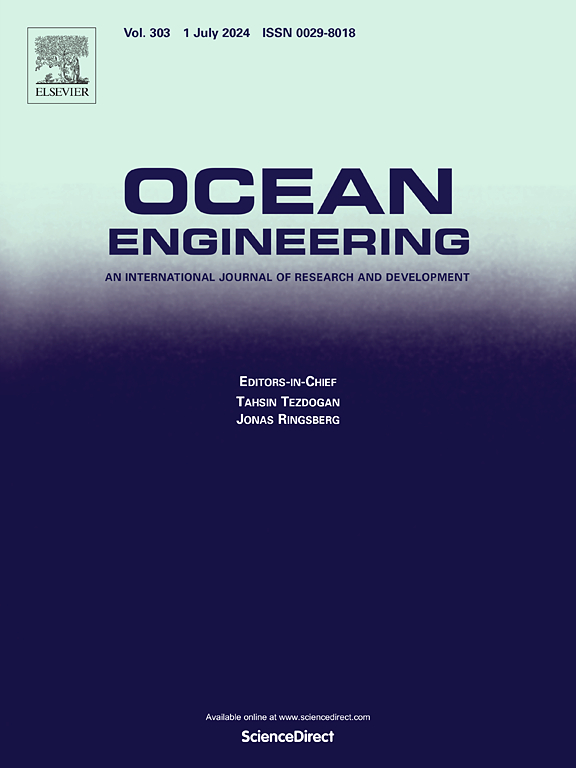基于字典学习和图卷积网络的水下螺旋桨故障鲁棒诊断
IF 4.6
2区 工程技术
Q1 ENGINEERING, CIVIL
引用次数: 0
摘要
由于水下螺旋桨在海洋环境中存在严重的噪声干扰和标记故障数据的稀缺性,因此水下螺旋桨故障诊断面临着巨大的挑战。本文提出了一种新的半监督方法,将字典学习和图卷积网络(GCNs)协同结合来解决这些挑战。首先使用快速傅里叶变换(FFT)从水听器信号中提取频域特征,然后使用字典学习来生成抗噪声的稀疏表示。基于这些表示,使用Pearson相关系数和k近邻构建图结构,随后通过伪标记策略以半监督方式训练的三层GCN对其进行处理。对三种螺旋桨在不同故障条件下进行了综合试验,验证了该方法的有效性和鲁棒性。通过实验结果发现,该方法不仅在正常条件下具有优异的性能,而且在高噪声环境下也能保持稳定的诊断能力,显著优于现有技术。本文章由计算机程序翻译,如有差异,请以英文原文为准。
Noise-robust underwater propeller fault diagnosis through dictionary learning and graph convolutional networks
Significant challenges are faced in underwater propeller fault diagnosis due to severe noise interference and the scarcity of labeled fault data in marine environments. In this paper, a novel semi-supervised approach is proposed that synergistically combines dictionary learning and graph convolutional networks (GCNs) to address these challenges. Frequency domain features are first extracted from hydrophone signals using the Fast Fourier Transform (FFT), and dictionary learning is then employed to generate noise-resistant sparse representations. Based on these representations, a graph structure is constructed using Pearson correlation coefficients and K-nearest neighbors, which is subsequently processed by a three-layer GCN that is trained in a semi-supervised manner with a pseudo-labeling strategy. Comprehensive experiments on three propeller types under various fault conditions were conducted, and exceptional effectiveness and robustness were demonstrated. It was found through experimental results that not only is excellent performance achieved under normal conditions, but stable diagnostic capability is also maintained in high-noise environments, thus significantly outperforming existing techniques.
求助全文
通过发布文献求助,成功后即可免费获取论文全文。
去求助
来源期刊

Ocean Engineering
工程技术-工程:大洋
CiteScore
7.30
自引率
34.00%
发文量
2379
审稿时长
8.1 months
期刊介绍:
Ocean Engineering provides a medium for the publication of original research and development work in the field of ocean engineering. Ocean Engineering seeks papers in the following topics.
 求助内容:
求助内容: 应助结果提醒方式:
应助结果提醒方式:


